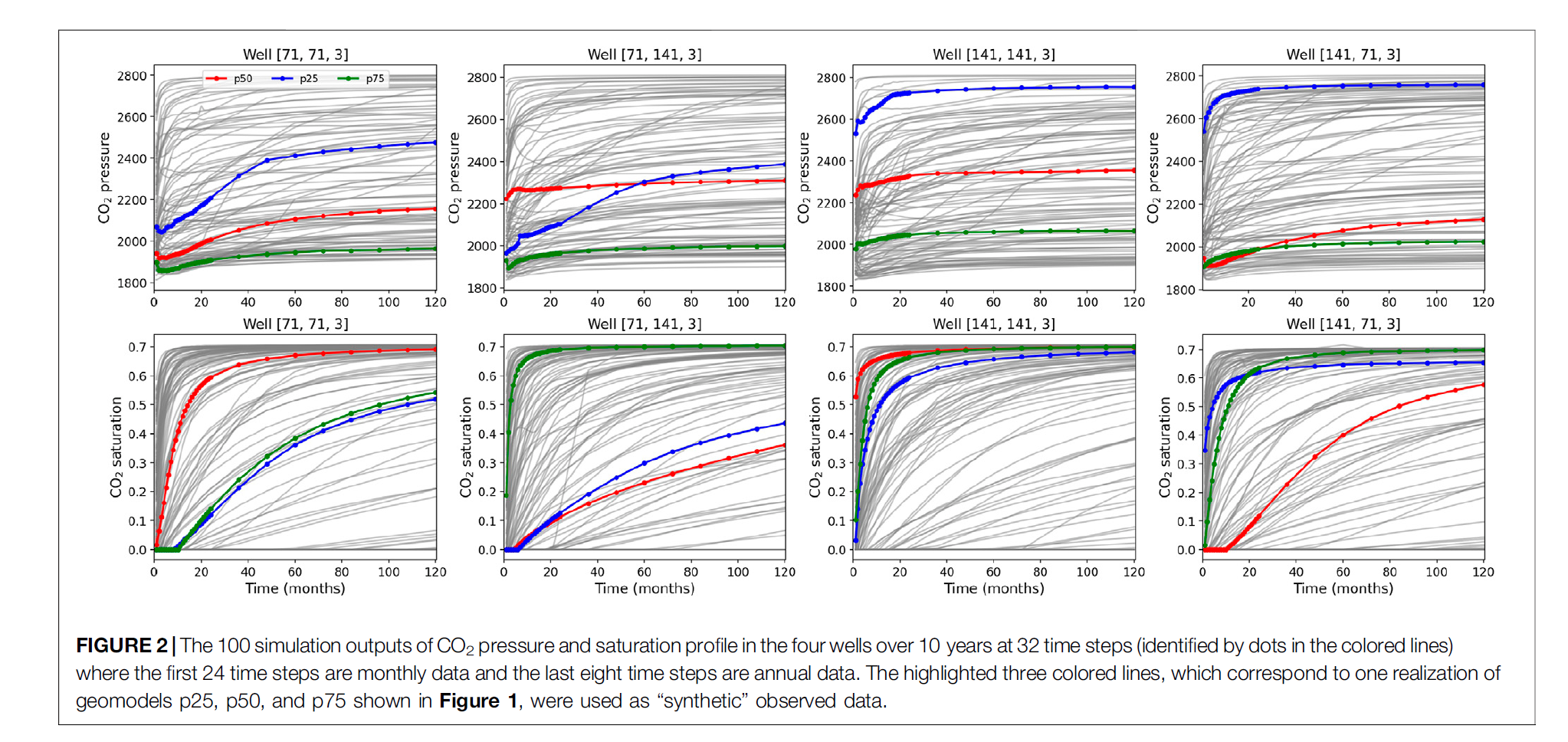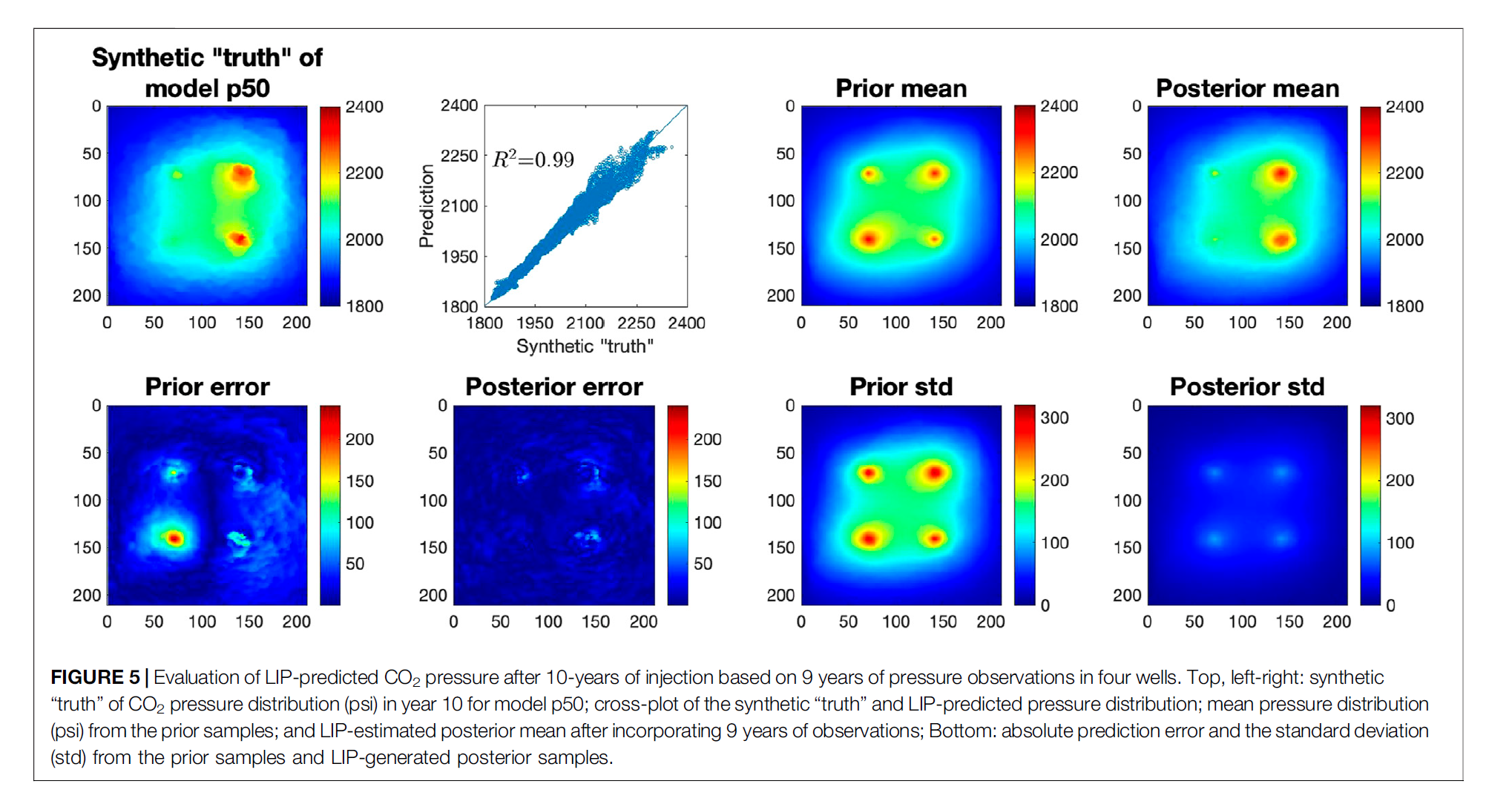Accurate and Rapid Forecasts for Geologic Carbon Storage via Learning-Based Inversion-Free Prediction
碳捕获和储存(CCS)是美国能源部正在研究的一种帮助减缓全球变暖的方法。该过程包括捕获工业源的二氧化碳排放,并将其永久封存在深层地质地层(储层)中。然而,CCS项目通常以“新储层”为目标,通常很少有表征数据,因此储层的岩石物理属性和其他地质属性存在很大的不确定性。
集合方法通常被用于在CO2注入之前预测多个实现,以可视化一系列潜在结果。此外,注入操作期间的监测数据用于更新注入前预测,从而提高预测和观测数据之间的一致性。一个用于准确、及时地预测储层内的压力积聚、CO2运移和分布以及通过测量数据更新预测系统变得至关重要。
本研究提出了一种基于学习的预测方法,可以准确、快速地预测CO2浓度和压力的空间分布,并进行不确定性量化,而不依赖于传统的反向模拟。机器学习技术包括降维、多变量数据分析和贝叶斯学习。预计该结果将为CO2封存作业者提供一个有效的工具,以便根据有限的模拟和监测数据及时做出科学决策。
Abstract
Carbon capture and storage (CCS) is one approach being studied by the U.S. Department of Energy to help mitigate global warming. The process involves capturing CO2 emissions from industrial sources and permanently storing them in deep geologic formations (storage reservoirs). However, CCS projects generally target “green field sites,” where there is often little characterization data and therefore large uncertainty about the petrophysical properties and other geologic attributes of the storage reservoir.
Consequently, ensemble-based approaches are often used to forecast multiple realizations prior to CO2 injection to visualize a range of potential outcomes. In addition, monitoring data during injection operations are used to update the pre-injection forecasts and thereby improve agreement between forecasted and observed behavior. Thus, a system for generating accurate, timely forecasts of pressure buildup and CO2 movement and distribution within the storage reservoir and for updating those forecasts via monitoring measurements becomes crucial.
This study proposes a learning-based prediction method that can accurately and rapidly forecast spatial distribution of CO2 concentration and pressure with uncertainty quantification without relying on traditional inverse modeling. The machine learning techniques include dimension reduction, multivariate data analysis, and Bayesian learning. The outcome is expected to provide CO2 storage site operators with an effective tool for timely and informative decision making based on limited simulation and monitoring data.




